#East Surrey Transport Committee
Explore tagged Tumblr posts
Text
With new timetable, 400 just needs the right turn at Caterham
One of Croydon’s many holes in the borough’s roads might yet be playing an unintended part in improving bus services in the area. Better route: the Metrobus 400 is about to get a new timetable Recent road closures on Coulsdon Common to unclog the soakaways have forced the highways department at Surrey County Council to make “special arrangements” for big business, because Tesco’s HGVs can’t make…
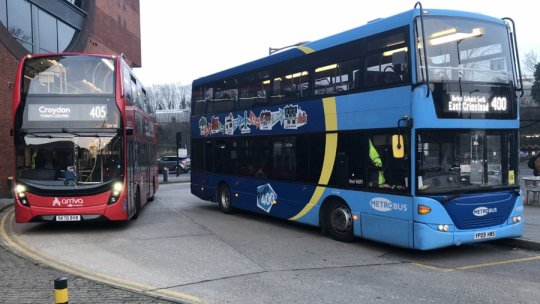
View On WordPress
#Caterham#Caterham Barracks#Caterham Village#Charlie King#Croydon#East Surrey Transport Committee#Metrobus#Redhill#Reigate#Selsdon#Surrey#Surrey County Council#Surrey Highways#Warlingham#Whyteleafe
2 notes
·
View notes
Text
The life of Leslie Howard
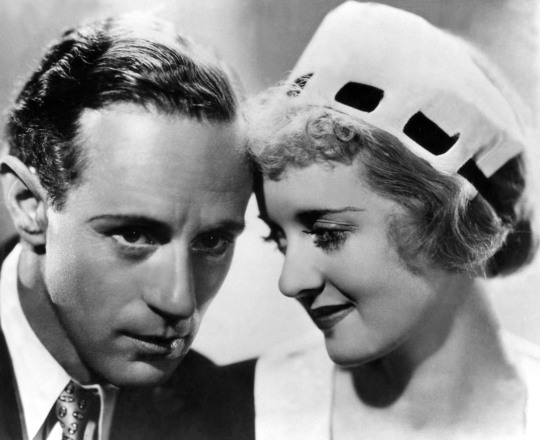
Words Mark Bryant
The actor Leslie Howard, who went to school in Dulwich and who lived in the area for nearly two decades, is probably best known as the gentlemanly Ashley Wilkes in the Hollywood blockbuster Gone with the Wind, which celebrates its 80th anniversary this year.
But he was also a wartime radio broadcaster of British propaganda and the director and star of a number of patriotic wartime films, notably The First of the Few, about the designer of the famous Spitfire fighter plane – which itself has links to Dulwich.
He was born Leslie Howard Steiner at 31 Westbourne Road (now Westbourne Drive), Forest Hill, on April 3 1893, the first child of Hungarian-born stockbroker’s clerk Ferdinand “Frank” Steiner, and his English wife Lilian.
Shortly after his birth the family moved to Vienna, where a sister Dorice and a brother, Alfred, were born. Dorice later founded Hurst Lodge School in Ascot, whose pupils included the actress Juliet Stevenson and the future Duchess of York.
On their return to London, Frank anglicised his surname to Stainer and soon afterwards Leslie and his two siblings were baptised at St Chrysostom’s church in Peckham.
In 1903 another sister, Irene (later a celebrated casting director for MGM and others) was born and, in 1904, Leslie attended Belvedere House preparatory school in Upper Norwood.
The family eventually settled at 45 Farquhar Road by Crystal Palace Park – only a short distance from Dulwich – and lived there from 1907 (when Leslie was 14) to 1910. It was a convenient location as Leslie’s widowed maternal grandmother ran a lodging house at “Woodbury”, 2 Jasper Road, close by.
In September 1907 Leslie was sent to Alleyn’s School. Here he was a near contemporary of the future novelist CS Forester (1899-1996), who was at Alleyn’s around this time.
As his daughter, Leslie Ruth Howard, says in her book A Quite Remarkable Father (1959): “The young Leslie went to school, which he loathed and at which, due to shyness and his afflicting near-sightedness, he was never much good.”
However, he began to write short stories and one-act plays and dreamed of becoming a writer. He later said: “As a boy the possibility of being an actor never even occurred to me... I wanted to write.”
Unfortunately, when he announced that he wanted to be a full-time writer his father had other ideas. Unlike fellow Old Alleynian CS Forester, whose father supported him for six months to get him started, Frank wanted Leslie to get a proper job and took him out of school in April 1910, shortly after his 17th birthday.
As a result, after a brief spell as a junior clerk in the purser’s office of a Thames steamboat company, he commuted daily by train to central London to work as a bank clerk for Cox & Co.
By this time the family had moved to “Allendale”, 4 Jasper Road, next to Leslie’s grandmother. Leslie’s uncle Wilfred Noy, a film director working for the Clarendon Film Company in Croydon, lived next door.
According to Leslie’s daughter, “It was a peaceful neighbourhood of large, ugly red-brick Victorian houses mostly set back from the road, with short carriage drives and pleasant gardens.
“Jasper Road, where the family found themselves, looked over a green valley where trees hid similar houses, and circled a hill on whose summit stood the Crystal Palace.”
Leslie’s mother, who had always been interested in the theatre, set up the Upper Norwood Dramatic Club (UNDC), for which Leslie was honorary secretary as well as playwright, actor and musician. By 1912 the UNDC was appearing regularly at Stanley Halls in South Norwood.
While working at the bank, Leslie continued writing and performing in his spare time with some success. In 1913 his story The Impersonation of Lord Dalton appeared in The Penny Magazine, and his play Deception was reviewed in The Stage. The following year, after the outbreak of World War One, he appeared in a crowd scene in his first film, The Heroine of Mons, directed by his uncle Wilfred.
When he was 21, he volunteered for the army and was commissioned in 1915 as a second lieutenant in a cavalry regiment stationed in Essex. Here he met and married a local girl in the spring of 1916 and was dispatched to France shortly afterwards. However, in May that year he was sent back home suffering from shell-shock.
Deemed unfit for military service, he decided to become a professional actor and changed his name to Leslie Howard. His uncle Wilfred also helped him get a role (his first credited film part) in The Happy Warrior and after acting in various provincial theatres he made his first appearance on the London stage in February 1918.
At about this time his parents and siblings left south-east London and settled in a large house in West Kensington. As a result, Howard, his wife and their young son, Ronald (who was born in Norwood in April 1918), also left and moved in with them.
In the 1920s Leslie went to the USA and began appearing in films, notably Berkeley Square, which earned him an Oscar nomination for best actor. In 1934 he was in an NBC radio play, Without Benefit of Clergy, with another Old Alleynian, Clive Brook, and starred in The Scarlet Pimpernel and Of Human Bondage.
Two years later came The Petrified Forest with his friend Humphrey Bogart (Bogie and Bacall named their daughter Leslie Howard Bogart), followed by Pygmalion in 1938, which earned him another best actor nomination. Leslie’s youngest brother, Arthur also appeared in this film.
Leslie’s last Hollywood film, Gone with the Wind (1939), was ironically greatly admired by Goebbels, and Hitler himself was a fan of Leslie’s co-star Clark Gable, later even offering a reward for his capture and transportation to Germany alive.
With the outbreak of World War Two, Leslie returned to the UK. He joined a Ministry of Information “ideas committee” for propaganda projects and made National Savings films with Noël Coward.
He also bought a house in Surrey and, helped by his friend and neighbour Jonah Barrington, the radio correspondent of the Daily Express, he listened to radio broadcasts from Poland as the Nazis invaded.
By coincidence it was Barrington who coined the nickname “Lord Haw Haw” for the infamous former Dulwich resident William Joyce, who by this time was broadcasting Nazi propaganda to the UK.
By a further coincidence, not only was Leslie later mentioned by name in some of these broadcasts, but the house he lived in when at Alleyn’s School (45 Farquhar Road), was only two doors away from Joyce’s own home (41 Farquhar Road) before he left for Germany in 1939.
Leslie broadcast propaganda himself, notably appearing on the novelist JB Priestley’s popular BBC weekly programme Postscripts, and later alone on Britain Speaks. These talks were broadcast to north America throughout the London Blitz, in an effort to persuade the (then neutral) USA to support the Allies.
In addition, he acted in the Ministry of Information’s first full-length feature film, 49th Parallel and produced, directed and acted in a number of patriotic anti-German propaganda films himself.
These included “Pimpernel” Smith, which was set in Nazi Germany and allegedly inspired Swedish diplomat Raoul Wallenberg to mount his real-life rescue operation in Budapest that saved thousands of Hungarian Jews from Nazi concentration camps. The casting director was Leslie’s sister, Irene, and his son Ronald, by then 23, also appeared in the film.
Another film, regarded by many as his best, was The First of the Few, whose title (suggested by Leslie) refers to a line in Churchill’s famous speech about the RAF’s role in the Battle of Britain: “Never in the field of human conflict was so much owed by so many to so few”. In the film, which has a number of Dulwich links, Leslie plays RJ Mitchell, the designer of the Spitfire fighter plane.
Mitchell’s wife is played by future Dulwich resident Rosamund John (1913-98) who, from 1950, would live in Alleyn Park with her second husband, Old Alleynian politician John Silkin (the third son of Lewis Silkin, 1st Baron Silkin, and a younger brother of another Old Alleynian politician, Samuel Silkin, Baron Silkin of Dulwich).
In addition, one of the real-life test pilots involved with the development of the Spitfire (and on which David Niven’s role as the fictional RAF squadron leader Geoffrey Crisp was partly based), was Old Alleynian wing commander George Hedley Stainforth (1899-1942). Sadly Stainforth was killed on active duty the year the film was released.
Leslie started shooting The First of the Few in the summer of 1941. The following year the Ministry of Information commissioned him to direct a recruitment film, The Gentle Sex, about women serving in the Auxiliary Territorial Service (ATS). Leslie was also the narrator.
Once again future Dulwich resident Rosamund John starred, as one of seven girls from different walks of life who join the ATS. In Leslie’s final film, The Lamp Still Burns, John was cast in the lead role as an architect who becomes a nurse.
In April 1943, shortly after his 50th birthday, Leslie was sent to Lisbon on a British Council lecture tour of neutral Spain and Portugal, which some claimed later was really a top-secret mission for Churchill to dissuade General Franco from joining the Axis powers. Some even thought that he had been mistaken for Churchill himself.
Whatever the truth, when flying back to Bristol from Lisbon, the civilian airliner he was travelling in was shot down on June 1 1943 by Luftwaffe fighters over the Bay of Biscay, and he and all the other people on board were killed.
.......................
Dr Mark Bryant lives in East Dulwich and is the author World War II in Cartoons and other books.
4 notes
·
View notes
Photo
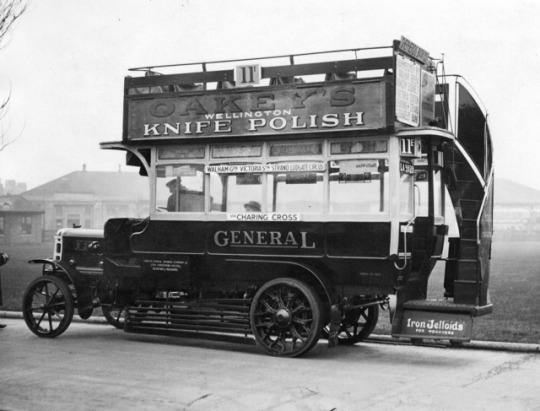
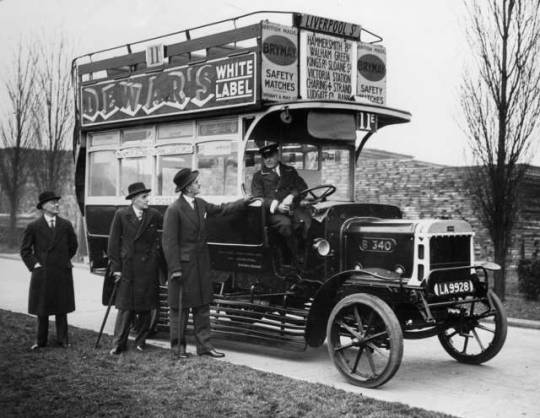
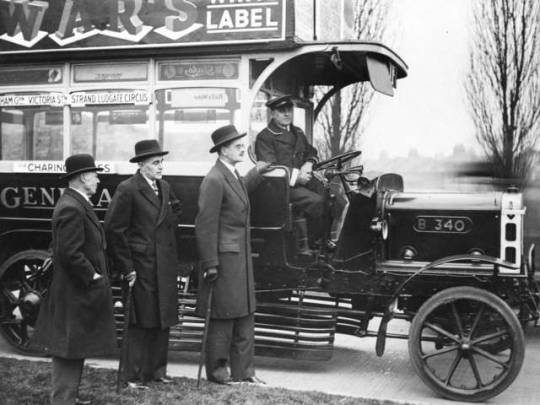


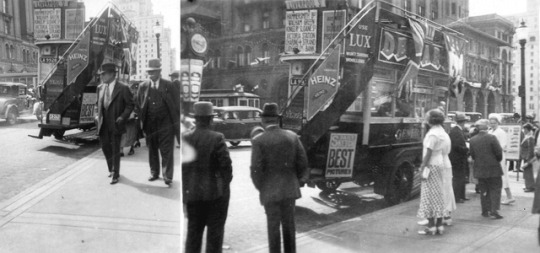

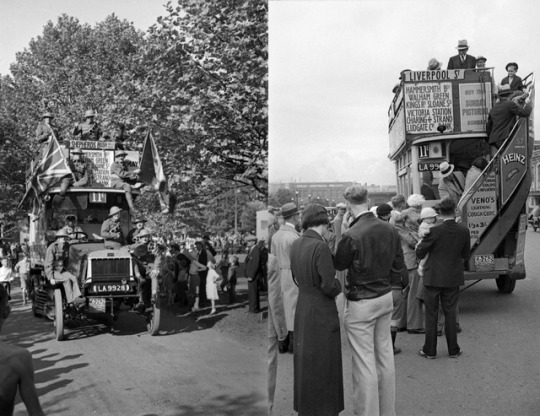

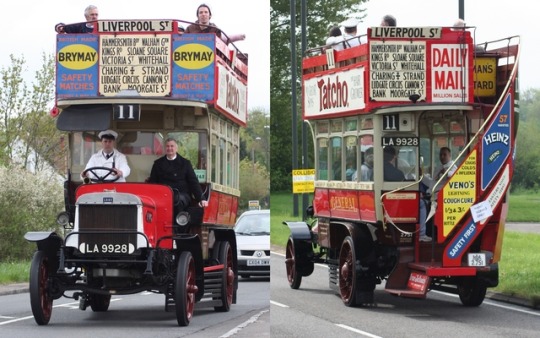
That time Vancouver brought over a double decker bus from London, England. It was for the 1936 Golden Jubilee celebrations, and remarkably, omnibus B340 (LA 9928) is one of the few remaining examples that survive to this day.
The first three photos above were taken in Chiswick, London, and photos 2 and 3 show the men who were believed to be responsible for negotiating the loan of the bus, Mr. B.E. Adams (role unknown, possibly with London Transport?), the Agent-General for British Columbia Mr. W.A. McAdam, and the governor of the Hudson's Bay Company Mr. P. Ashley Cooper. The Lethbridge Herald ran the second of these photos on page 5, January 06, 1936, likely taken in late 1935, with the following caption:
One of the two remaining pre-war omnibuses of the London passenger transport board to survive the great war is to be loaned to the city of Vancouver for their jubilee celebrations next year. Mr. W. A. McAdam (LEFT) acting agent-general for British Columbia, and Mr. P. Ashley Cooper, governor of the Hudson's Bay Company, inspecting the old war-time bus at the Chiswick (London) garage of the London passenger transport board.
The number of remaining pre-war omnibuses has actually gone up since then. It looks like there are now at least 4 surviving models, though I don’t know if they can all boast pre-war manufacture dates; B43 (1910), B340 (1911), B1609 (1911), and B2737 (1914, but I’m unsure of the month). A fifth bus, B214 LA9802 (1911) has an original chassis, but the engine, wheels and front axle came from the remnants of two other B-Types, while the body was found in a Sussex garden that had originated with an East Surrey B-Type built in 1912. As of 2014, it looks like B214 is once again requiring restoration; I'm not sure what the plans are with this one. If it gets restored in the near future, perhaps we can bump the number up to five. I’ve since learned from a comment by Tony Barfield on flickr that B214 is...
...now owned by the Thames Valley & Great Western Trust and now in store near Windsor. LT Museum purchased THREE B type chassis from the Ward brothers collection near Harrogate, Yorkshire. One they have restored is B1056, which is now the Battle bus.
Additionally, the Self-Preservation-Society notes an unrestored chassis B1056, though I don’t know if this has since been used elsewhere. You can see a photo of this chassis from 2014 here. B5103 was sold back in 2014 for £281,500 at Bonhams (where there’s an extensive vehicle history), though this example dates from 1922.
In a number of photos, the Vancouver Archives refers to the bus as "Old Bill", but the real name "Ole Bill" didn’t really apply to bus B340 at all. A little closer to the truth, CVA 612-004 refers to the bus as "Old Bill’s" brother, though it should have been "Ole Bill’s Brother". It was the London General Omnibus Company B43 that became the WWI memorial known as "Ole Bill", and since the Brits were unable to loan us their national treasure for our 50th anniversary, they sent us the next best Omnibus, B340. CVA 612-006 informs us that the bus arrived at the Ballantyne Pier in Vancouver on May 6, 1936, and CVA 612-007 reveals the bus was a little bit temperamental, and the engine refused to be humoured! Finally, it did manage to get off the ship.
London Transit Museum provides a brief background on the original "Ole Bill", describing how the bus got its name:
A brass shell was mounted on the dashboard, ornate brass plates for the numbers on the bonnet sides and a brass bust of ‘Ole Bill, the cartoon figure created by Bruce Bairnsfather, formed the radiator cap. This association with the hugely popular cartoon character was to rapidly give the bus its nickname of ‘Ole Bill, commonly but incorrectly rendered as Old Bill. The title was derived from Bairnsfather’s first cartoon of two Tommies under fire in a shell hole, Bill saying to his companion, ‘If you knows of a better ‘ole, Go to it!’
B43 had been given a new body and overhauled for the Palace in 1920. Battle honours were added to the windows – Antwerp, Ypres, Ancre and Somme – before being handed over to the Auxiliary Omnibus Companies Association. The veterans used it for parades and funerals. At the King’s behest, the bus and veterans from Underground and the General took part in the first Armistice Day parade from 1920.
B43 remains preserved in the Imperial War Museum in London, while B340 is part of the London Transport Museum Collection. B-Type bus B2737 was recently converted to honour the “Battle Bus” of WWI, and more can be learned about this bus at the London Transport Museum.
It would appear the Vancouver Jubilee committee was still to some extent, re-enacting the end of WWI with this bus, as they filled it with soldiers and flags and paraded through the streets, much like the original "Ole Bill" had done in 1920.
This early double decker bus was of fundamental significance for transit in London, and the ripple effect was felt around the world. Our neighbours in Victoria have been using double decker buses since 2000, much earlier if you include the tourist buses run by Gray Line Tours, and Vancouver has just begun preliminary testing of the next generation double deckers on certain routes. To provide us with some of the significance of the B-Type bus, Doug Rose provides the backstory, along with some remarkable vector drawings that he created, shown above. From his website:
...there are strong arguments to say the B-Type was London’s first ‘standard’ motor bus. Though they were far from all being the same, the model was certainly the first to be mass produced and entered service in late 1910. The chassis, which varied in height, carried wooden bodies from more than one builder, closely reminiscent of their horse bus forebears. Steel wheels of different designs were used, with solid tyres, though there were no front brakes. A product of dominant operator the London General Omnibus Company, the bus was a success. Its overhanging upper deck variations saw a few different seating layouts too, though the norm was 16 lower and 18 upper. The early radiators had a flat top sporting ‘LGOC’, later being replaced by those more curved and displaying ‘GENERAL’. The wheelbase varied and a few single deckers were also built. Experiments with the ‘lifeguards’ between the wheels eventually settled on that shown in this drawing and these were retrospectively fitted to older buses. The bus entered service in 1911 though this drawing attempts to show B340 as closely as possible to how it looks in its state of preservation in 2014; several aspects need to be considered however. Requisitioned for the War effort in 1914 and staying in London, it returned to passenger service in 1916 but with a new body. It was withdrawn in 1924 and retained for preservation. After some meandering of locations and uses, it ended up in the British Transport Museum at Clapham in 1960. It was re-painted in red, as shown here, though B-Types had been a darker red until 1913. On the vehicle though not originally fitted are the front headlamps, added from 1913; the driver’s sun visor is a later addition and a far more modern offside mirror has been added; some of the reproduction adverts use typefaces not designed when the bus was in service.
Looking at those solid rubber tires, I can only imagine the experience must have been a rather bumpy ride! However uncomfortable, they were important first steps on the road to mass transit, and we’re fortunate to have shared in this historic legacy.
#bus#transit#Transport for London#london transport#vancouver#b340#b43#doubledecker#golden jubilee#1936
3 notes
·
View notes
Link

Media playback is unsupported on your device
Media captionPolice cordons are in place around the residential street in Surrey
Police have arrested an 18-year-old man on suspicion of a terror offence in connection with Friday's attack on a London Tube train.
Armed police are continuing to search a house in Sunbury-on-Thames, Surrey.
The arrest is "very significant" and the terror threat level remains "critical", Metropolitan Police Deputy Assistant Commissioner Neil Basu said.
The man was arrested in the departure area of Dover port on Saturday and has been moved to a London police station.
Thirty people were injured after the explosion on a train at Parsons Green.
Live: Arrest in hunt for Tube attacker
Reality Check: How terror threat levels work
In pictures: Parsons Green blast
Armed police patrols stepped up in Scotland
The arrest sparked an evacuation of Dover port and a number of items were recovered in a police search, Mr Basu said, adding that detectives were "keeping an open mind" as to whether more people were involved in the Tube attack.
Residents of houses surrounding the Sunbury-on-Thames property have been allowed to return home after being evacuated by officers earlier on Saturday.
Locals said the property being searched by police is occupied by married couple Ronald Jones, 88, and Penelope Jones, 71.
The couple are known for fostering many children and young people over several decades, and in 2010 were rewarded by the Queen by being made MBEs.

Image copyright PA
Image caption Penelope and Ronald Jones, who were made MBEs in 2010, live in the house at the centre of a police search
One neighbour, Anna Wilkins, told BBC News she was "shaking like jelly" after being told by armed police to leave the home she shares with her partner and two young children.
"As I walked out of my house I saw three armed officers," she said. "One had a balaclava on, all I could see were his eyes, I was really frightened."
Many residents had been evacuated to Staines Rugby Club where one local, Dan Norcott, said the council had begun making preliminary arrangements for hotel accommodation.

Media playback is unsupported on your device
Media caption"An officer banged on the door quite severely and said 'Out now you've got two minutes'"
After a meeting of the government's Cobra emergency committee earlier, Home Secretary Amber Rudd said it was "much too early" to say whether those behind the attack were known to authorities, adding: "The operation is ongoing".
The terror threat level was raised to critical, meaning an attack may be imminent, on Friday evening.
Met Police Commissioner Cressida Dick described the attack as "cowardly and indiscriminate".
Ms Dick, who travelled by Tube before joining Met officers patrolling the South Bank, said: "London has not stopped after other terrible attacks and it will not stop after this one."

Image copyright PA
Image caption Met Police Commissioner Cressida Dick joined police patrolling London's South Bank
Operation Temperer, which involves the use of the military was put in place after the threat level was raised and is being stepped up gradually.
Home affairs correspondent Danny Shaw said it is mainly focused on London and the south-east of England and is described as "light-touch", and not on the same scale as what was seen after the Manchester Arena attack.
Mayor of London Sadiq Khan said "significant" police activity would continue this weekend.
More armed police officers will be present at London Underground stations, as well as at stations across England, Scotland and Wales, British Transport Police Assistant Chief Constable Robin Smith told the BBC.
Most people caught in the blast were treated for minor injuries and have been released, NHS England said, but three people remain in Chelsea and Westminster hospital in central London.
Analysis: A 'critical' change

Image copyright PA
By BBC security correspondent Frank Gardner
This is the fourth time the UK national terror threat level has been raised to critical since the system was made public in 2006.
The last time was in May following the Manchester Arena bombing, when it was wrongly thought the bomb-maker was still at large and could strike again.
On Friday the government delayed raising the threat level to critical for more than 12 hours under advice from the Joint Terrorism Analysis Centre. On Saturday the home secretary said it would remain at this level, implying that despite the arrest there is still thought to be a risk of another imminent attack.
Each time the level has gone to critical, it has only stayed at this highest level of alertness for three to four days - this is partly as it involves an unsustainably high tempo for the police, intelligence and security services.
Extra patrols are mounted on the streets of London, covert surveillance is stepped up and troops are deployed to free up police officers to focus on the main effort: catching the bomber before he can plant another device.
But the very fact that Friday's attack took place with no warning shows this system is only a broad guide to the threat and simply reflects the latest assessment.
The BBC understands CCTV images have been obtained of the person suspected of planting the explosive device.
The Islamic State group has said it was behind the bomb, which detonated at 08:20 BST on Friday.
It is understood the device had a timer, but the BBC's security correspondent Frank Gardner said the bomb appeared not to have gone off properly.

Image copyright PA
Image caption Police have spoken to 100 witnesses so far and received 180 images and videos from the public
Had it worked as intended, it would have killed everyone around it and maimed everyone in the train carriage for life, he said.
The Met's Assistant Commissioner Mark Rowley said it was "very routine" for the Islamic State group to claim the attack, whether in contact with those involved or not.
They urge anyone with information to get in touch and to upload pictures and video to the website www.ukpoliceimageappeal.co.uk or to call the Anti-Terrorist Hotline on 0800 789 321.
Were you at Parsons Green station? Did you witness the events? If it's safe to share your experiences then please email [email protected] with your stories
Please include a contact number if you are willing to speak to a BBC journalist. You can also contact us in the following ways:
WhatsApp: +447555 173285
Send pictures/video to [email protected]
Or Upload your pictures/video here
Tweet: @BBC_HaveYourSay
Send an SMS or MMS to 61124 (UK) or +44 7624 800 100 (international)
Please read our terms & conditions
Read more: http://www.bbc.co.uk/news/uk-41292528
0 notes
Link
Media playback is unsupported on your device
Media captionPolice cordons are in place around the residential street in Surrey
Police have arrested an 18-year-old man on suspicion of a terror offence in connection with Friday’s attack on a London Tube train.
Armed police are continuing to search a house in Sunbury-on-Thames, Surrey.
The arrest is “very significant” and the terror threat level remains “critical”, Metropolitan Police Deputy Assistant Commissioner Neil Basu said.
The man was arrested in the departure area of Dover port on Saturday and has been moved to a London police station.
Thirty people were injured after the explosion on a train at Parsons Green.
Live: Arrest in hunt for Tube attacker
Reality Check: How terror threat levels work
In pictures: Parsons Green blast
Armed police patrols stepped up in Scotland
The arrest sparked an evacuation of Dover port and a number of items were recovered in a police search, Mr Basu said, adding that detectives were “keeping an open mind” as to whether more people were involved in the Tube attack.
Residents of houses surrounding the Sunbury-on-Thames property have been allowed to return home after being evacuated by officers earlier on Saturday.
Locals said the property being searched by police is occupied by married couple Ronald Jones, 88, and Penelope Jones, 71.
The couple are known for fostering many children and young people over several decades, and in 2010 were rewarded by the Queen by being made MBEs.
Image copyright PA
Image caption Penelope and Ronald Jones, who were made MBEs in 2010, live in the house at the centre of a police search
One neighbour, Anna Wilkins, told BBC News she was “shaking like jelly” after being told by armed police to leave the home she shares with her partner and two young children.
“As I walked out of my house I saw three armed officers,” she said. “One had a balaclava on, all I could see were his eyes, I was really frightened.”
Many residents had been evacuated to Staines Rugby Club where one local, Dan Norcott, said the council had begun making preliminary arrangements for hotel accommodation.
Media playback is unsupported on your device
Media caption“An officer banged on the door quite severely and said ‘Out now you’ve got two minutes'”
After a meeting of the government’s Cobra emergency committee earlier, Home Secretary Amber Rudd said it was “much too early” to say whether those behind the attack were known to authorities, adding: “The operation is ongoing”.
The terror threat level was raised to critical, meaning an attack may be imminent, on Friday evening.
Met Police Commissioner Cressida Dick described the attack as “cowardly and indiscriminate”.
Ms Dick, who travelled by Tube before joining Met officers patrolling the South Bank, said: “London has not stopped after other terrible attacks and it will not stop after this one.”
Image copyright PA
Image caption Met Police Commissioner Cressida Dick joined police patrolling London’s South Bank
Operation Temperer, which involves the use of the military was put in place after the threat level was raised and is being stepped up gradually.
Home affairs correspondent Danny Shaw said it is mainly focused on London and the south-east of England and is described as “light-touch”, and not on the same scale as what was seen after the Manchester Arena attack.
Mayor of London Sadiq Khan said “significant” police activity would continue this weekend.
More armed police officers will be present at London Underground stations, as well as at stations across England, Scotland and Wales, British Transport Police Assistant Chief Constable Robin Smith told the BBC.
Most people caught in the blast were treated for minor injuries and have been released, NHS England said, but three people remain in Chelsea and Westminster hospital in central London.
Analysis: A ‘critical’ change
Image copyright PA
By BBC security correspondent Frank Gardner
This is the fourth time the UK national terror threat level has been raised to critical since the system was made public in 2006.
The last time was in May following the Manchester Arena bombing, when it was wrongly thought the bomb-maker was still at large and could strike again.
On Friday the government delayed raising the threat level to critical for more than 12 hours under advice from the Joint Terrorism Analysis Centre. On Saturday the home secretary said it would remain at this level, implying that despite the arrest there is still thought to be a risk of another imminent attack.
Each time the level has gone to critical, it has only stayed at this highest level of alertness for three to four days – this is partly as it involves an unsustainably high tempo for the police, intelligence and security services.
Extra patrols are mounted on the streets of London, covert surveillance is stepped up and troops are deployed to free up police officers to focus on the main effort: catching the bomber before he can plant another device.
But the very fact that Friday’s attack took place with no warning shows this system is only a broad guide to the threat and simply reflects the latest assessment.
The BBC understands CCTV images have been obtained of the person suspected of planting the explosive device.
The Islamic State group has said it was behind the bomb, which detonated at 08:20 BST on Friday.
It is understood the device had a timer, but the BBC’s security correspondent Frank Gardner said the bomb appeared not to have gone off properly.
Image copyright PA
Image caption Police have spoken to 100 witnesses so far and received 180 images and videos from the public
Had it worked as intended, it would have killed everyone around it and maimed everyone in the train carriage for life, he said.
The Met’s Assistant Commissioner Mark Rowley said it was “very routine” for the Islamic State group to claim the attack, whether in contact with those involved or not.
They urge anyone with information to get in touch and to upload pictures and video to the website http://ift.tt/1H4e4h9 or to call the Anti-Terrorist Hotline on 0800 789 321.
Were you at Parsons Green station? Did you witness the events? If it’s safe to share your experiences then please email [email protected] with your stories
Please include a contact number if you are willing to speak to a BBC journalist. You can also contact us in the following ways:
WhatsApp: +447555 173285
Send pictures/video to [email protected]
Or Upload your pictures/video here
Tweet: @BBC_HaveYourSay
Send an SMS or MMS to 61124 (UK) or +44 7624 800 100 (international)
Please read our terms & conditions
Read more: http://ift.tt/2wkgEne
The post Armed police search house over Tube bomb appeared first on MavWrek Marketing by Jason
http://ift.tt/2fmvJgN
0 notes
Text
How TfL's changes to 10 Croydon bus routes will affect you
There’s major changes coming to 10 bus routes serving the south of Croydon, including Purley, Coulsdon, Kenley and South Croydon, as well as Sutton and Wallington, coming into effect on Saturday March 2. Here’s TfL’s blow-by-blow breakdown of their bus route changes: Routes 455, 166, 312 and S4 Route 455 Route 455 will be withdrawn. Use alternative bus routes. Continue reading How TfL’s changes…
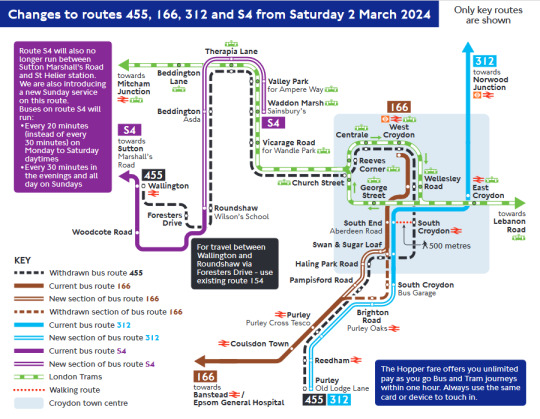
View On WordPress
#Charles King#Coulsdon#Croydon#Croydon Council#East Surrey Transport Committee#Kenley#Kenley Residents Association#London#London Buses#Neil Garratt#Old Coulsdon#Purley#Purley Hospital#Purley Way#Route 455#South Croydon#St Helier#Sutton#Sutton Council#TfL#Transport for London#Wallington
0 notes
Text
Goodbye Route 455... it's been a long, long journey. Too long
There’s more than a touch of an old Morecambe and Wise gag about the extensive changes to 10 bus routes in Croydon and Sutton: ‘TfL has chosen all the right routes, just not the right roads’. By JEREMY CLACKSON, transport correspondent End of the line: the 455 between Wallington and Old Coulsdon, via Purley, will operate for a final time on Mar 1 Significant changes are coming to 10 bus routes…

View On WordPress
#Charles King#Coulsdon#Croydon#Croydon Council#East Surrey Transport Committee#Kenley#Kenley Residents Association#London#London Buses#Neil Garratt#Old Coulsdon#Purley#Purley Hospital#Purley Way#Route 455#South Croydon#St Helier#Sutton#Sutton Council#TfL#Transport for London#Wallington
0 notes
Text
Ticket office decision was 'Halloween nightmare' for Tories
Hailing yesterday’s decision to reject Department for Transport plans to close railway station ticket offices, one local campaigner has described the outcome as a “Halloween nightmare for the Government”. Strong opposition: 600 passengers who use Sanderstead station signed a petition opposing ticket office closures In July, nine train companies announced plans to close 269 station ticket offices…

View On WordPress
#Charlie King#Conservative#Coulsdon#Croydon#Department for Transport#East Croydon station#East Surrey Transport Committee#Govia Thameslink#GTR#London TravelWatch#Norwood Junction#Purley#Railway ticket offices#South Norwood#Thornton Heath#Tory
0 notes
Text
Khan warned: axing travelcard will damage London's reputation
‘The One Day Travelcard is a perfect example of integrated ticketing across all forms of transport in London’, according to a passengers committee from Croydon and Surrey. So why is Mayor Khan planning to scrap it? An influential travel group representing public transport passengers in Coulsdon, Sutton and east Surrey, has today warned London Mayor Sadiq Khan that the withdrawal of the One Day…
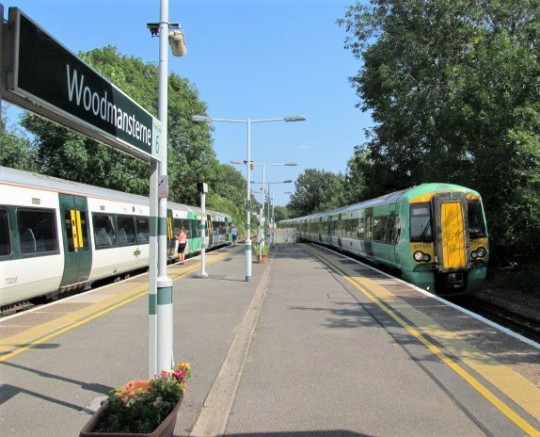
View On WordPress
#Charlie King#Coulsdon#Croydon#Croydon Trams#East Surrey Transport Committee#ESTC#London#London Overgraound#London Undergound#Mayor Sadiq Khan#One Day Travelcard#Sadiq Khan#Surrey#Sutton#TfL#Transport for London
0 notes
Text
The closure of railway station ticket offices will have an “unacceptable impact on Londoners”, according to a member of the London Assembly today. The Rail Delivery Group, under the cover of a very brief public consultation, is implementing the staff-cutting ticket office closures at the behest of the Tory Government. This week, Charlie King, the chair of the East Surrey Transport Committee,…

View On WordPress
0 notes